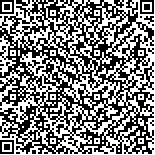王晶,曾明,金敏敏,杨美霞,崔尧,朱美红,施明,李亮,顾旭东.运动观察疗法对亚急性期脑梗死后上肢功能障碍患者上肢运动功能和日常生活活动能力的影响[J].中华物理医学与康复杂志,2017,39(7):503-506
扫码阅读全文

|
| 运动观察疗法对亚急性期脑梗死后上肢功能障碍患者上肢运动功能和日常生活活动能力的影响 |
| Action observation therapy improves upper extremity motor function after stroke |
| |
| DOI: |
| 中文关键词: 运动观察疗法 镜像神经元系统 脑梗死 上肢运动功能 康复 |
| 英文关键词: Action observation therapy Mirror neurons Cerebral infarction Upper-extremity motor function Rehabilitation |
| 基金项目:国家自然科学基金资助项目(81201504);浙江省自然基金资助项目(LY12H17004);浙江省嘉兴市科技计划项目(2014AY21031-9) |
|
| 摘要点击次数: 5846 |
| 全文下载次数: 7078 |
| 中文摘要: |
| 目的 观察运动观察疗法对亚急性期脑梗死患者上肢运动功能及其日常生活活动能力的影响。 方法 将脑梗死后上肢功能障碍患者41例按随机数字表法分为观察组21例和对照组20例。2组患者均给予相应的药物治疗和康复训练,观察组在此基础上增加运动观察疗法进行治疗。于治疗前、治疗8周后(治疗后)采用上肢Fugl-Meyer运动功能评分法(FMA)、Wolf运动功能测试(WMFT)和改良的Barthel指数(MBI)分别评估2组患者上肢运动功能、手部功能和日常生活活动能力。 结果 治疗后,2组患者的FMA评分、WMFT评分、MBI评分较组内治疗前均显著改善,差异均有统计学意义(P<0.05),且观察组治疗后的FMA评分[(40.23±8.28)分]、WMFT评分[(54.95±8.46)分]、MBI评分[(74.29±10.99)分]均显著优于对照组治疗后,差异均有统计学意义(P<0.05)。 结论 基于镜像神经元理论的运动观察疗法联合常规康复治疗可显著改善亚急性期脑梗死后上肢功能障碍患者的上肢运动功能、手部功能和日常生活活动能力。 |
| 英文摘要: |
| Objective To explore the effects of action observation therapy on upper-extremity motor function and ability in the activities of daily living after cerebral infarction. Methods Forty-one cerebral infarction survivors were randomly assigned to an observation group (n=21) or a control group (n=20). Both groups were given the conventional rehabilitation treatment, while the observation group additionally received action observation therapy 20 mins per day, 6 times per week for 8 weeks. Before and after the 8 weeks of treatment, both groups were assessed using the Fugl-Meyer assessment (FMA), Wolf′s motor function test (WMFT) and the modified Barthel index (MBI). Results Before the intervention there was no significant difference between the groups in any of the measurements. After the 8 weeks of treatment, all of the results in the treatment group were significantly better, on average, than those of the control group. Conclusions Action observation therapy can improve upper-extremity motor function and ability in the activities of daily living after stroke. |
|
查看全文
查看/发表评论 下载PDF阅读器 |
| 关闭 |